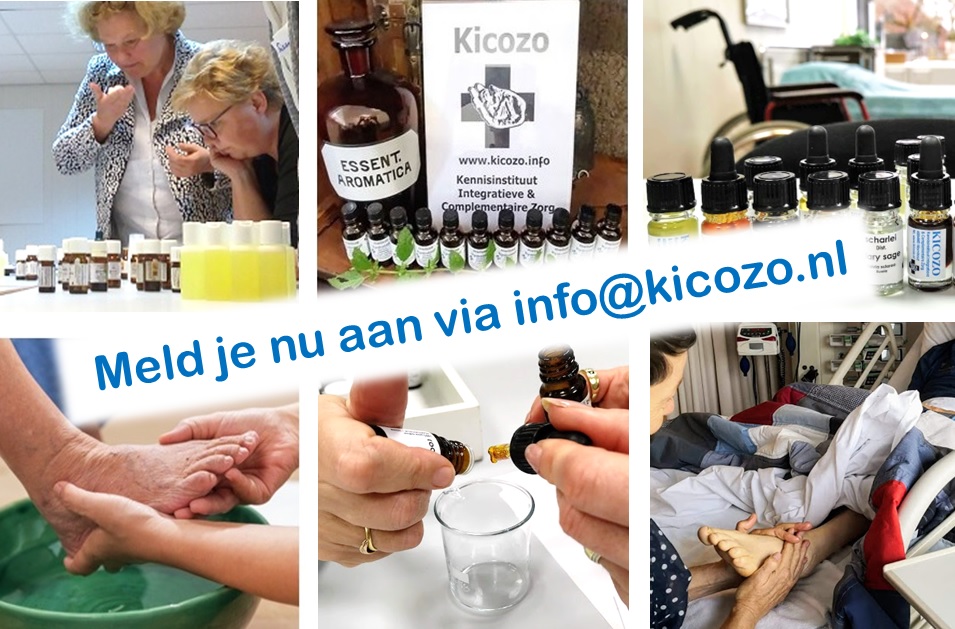
Blog: flu and cold viruses, aromatic approach.
© Madeleine Kerkhof
Coronaviruses are believed to cause a large percentage of all common colds in human adults and children. Coronaviruses cause major symptoms, e.g. fever, throat swollen adenoids, in humans usually in the winter and early spring seasons (Liu et al., 2017). This virus can cause pneumonia, as a secondary bacterial pneumonia, and also cause bronchitis, either direct viral bronchitis or a secondary bacterial bronchitis (Forgie et al., 2009). SARS, we have seen an extensive outbreak in the past, causes both upper and lower respiratory tract infections. We are now facing the Novel coronavirus (2019-nCoV), known as COVID-19. This virus may also cause blood clotting and heart disease, alongside severe after effects, and death, mostly but not exclusively in the ill and elderly.
I believe that a good and well balanced blend of antiviral and terrain supporting oils with a good rationale can help prevent infection and possibly treat it effectively, alongside any standard medical treatment of course. We know that people suffering from other (viral) respiratory infections may have lower immune response to this particular virus.
Studies
As far as I’m aware, there are still very little studies linking efficacy of essential oils directly to this particular virus type, but a start has been made. Geranium (Pelargonium graveolens) and lemon (Citrus limon) contain molecules that help downregulate ACE2, angiotensine converterting enzyme, that is involved in Covid-19 (Senthil Kumar et al., 2020). In another paper it appears that cajeput (Melaleuca cajeputi) is considered as a valuable resource for preventing SARS-CoV-2 invasion into human body (My et al. 2020).
Considering these studies and the safety of these oils in appropriate dosages and accompanied by safety advice, I have adjusted my recommended suggestions for blends.
Blends
If you are not threatened by the Corona virus in any way, bless you, but you may use this example for colds and flues of other influenza types and the rhino virus, and as a further preventative measure.
2 parts Siberian fir subCO2 or EO (Abies sibirica)
2 parts Thyme ct. linalool EO (Thymus vulgaris ct. linalool)
1 part Cajeput (Melaleuca cajeputi)
1 part Geranium EO (Pelargonium graveolens)
1 part Lemon EXP (Citrus limon)
1 part Chamomile, German CO2-select (Matricaria recutita)
Modus operandus: fill an inhaler with 20-25 drops of the blend and add a few drops of jojoba to fixate the blend. Alternatively use 1-4 drops at a time on an AromaPatch®.
You may also add this blend to a salve as a chest rub, for most adults (5%). For children, ALWAYS ask expert advice of your aromatherapist considering age and other specifics.
My suggested blend for present viral respiratory infections by rhino or corona virus (not necessarily Covid19 specific, and for adults and children from 4 yr only):
2 parts Siberian fir subCO2 / EO (Abies sibirica)
1 part Eucalyptus, wild (Eucalyptus globulus) – or alternative with no 1,8 cineol if necessary
1 part Thyme ct. thymol (voor volwassenen) or ct. linalool for children (Thymus vulgaris)
1 part Geranium EO (Pelargonium graveolens)
1 part Lemon EXP (Citrus limon)
1 part Helicrysum EO from Italy / Corsica (Helicrysum italicum) of Chamomile, German CO2-select (Matricaria recutita)
Modus operandus: fill an inhaler with 20-25 drops of the blend and add a few drops of jojoba to fixate the blend. Alternatively use 1-4 drops at a time on an AromaPatch®.
You may also add this blend to a salve as a chest rub, for most adults (5%). For children, ALWAYS ask expert advice of your aromatherapist considering age and other specifics.
Precautions and warning:
Avoid in case of sensitivity to any of the ingredients. Ask the receiver about allergies before starting, especially for conifers, firs, pines.
Replace Eucalyptus globulus by Eucalyptus smithii for younger children from around 3 months upwards.
Avoid Eucalyptus globulus in people with epilepsy or disease with a tendency to seizures.
1,8 cineol rich oils such as most Eucalyptus species and cajeput (Melaleuca cajeputi) can interact with medication, even when inhaled (Tisserand & Young, 2014). Ask an expert for advice for people on multiple medication.
Avoid inhalation at the same time as other inhaled medications. Allow for 2-3 hours in between.
Avoid precautionary dermal use for those with blood clotting disorders although the risk is extremely small (Helicrysum). You can exchange it for German Chamomile CO2-select or distilled oil (Matricaria recutita).
The rationale:
Siberian fir (Abies sibirica) is a powerful antiviral against the flu such as influenza H3N2 through activating the necessary immune response through inhalation / vaporisation (Safatov et al., 2005; Shishkina et al., 2005; Sergeev et al., 2001). Siberian fir is known to be an excellent mucolytic and expectorant, yet balsamic and soothing for the respiratory tract, a valuable antiseptic and anti-inflammatory and offers terrain support as well. It’s a lung and airway tonic and helps with coughs and colds. It’s also It’s my first choice for almost all viral respiratory infections.
Geranium (Pelargonium graveolens) and lemon (Citrus limon) contain molecules that help downregulate ACE2, angiotensine converterting enzyme, that is involved in Covid-19 (Senthil Kumar et al., 2020).
In another paper it appears that cajeput (Melaleuca cajeputi) is considered as a valuable resource for preventing SARS-CoV-2 invasion into human body (My et al. 2020).
Eucalyptus globulus is highly antiviral against Haemophilus influenzae and H. parainfluenzae (Cermelli et al., 2008). An interesting study showed that E. globulus may well reinforce the flu vaccine Hemagglutinin in its actions (Brazzoli et al., 2015). The oil is also highly anti-inflammatory for the respiratory tract (Yadav and Chandra, 2017; Zhao et al., 2006), and may help to prevent and treat Staphylococcus pneumoniae (Cermelli et al., 2008).
Thyme (Thymus vulgaris ct. linalool) is gentle and powerful at the same time. Research mainly focuses at red thyme (Thymus vulgaris ct. thymol). Thyme is highly antiseptic for the lungs and airways, including antiviral against Haemophilus influenzae, H. parainfluenzae en Moraxella catarrhalis (Ács et al., 2018). It’s also antispasmodic (Beer et al., 2007), a cough relief (WHO 2004), mucolytic and expectorant.
Helicrysum (Helicrysum italicum from Italy or Corsica – France) is a great terrain support for swollen mucosa and acts like a corticosteroid (Sala et al., 2002), without the side effects that would go with a steroid. Helicrysum acts like a pulmonary cleanser and is known to boost immunity.
Although there are other oils to consider, even the costly Melissa officinalis against influenza virus H9N2 (Pourghanbari et al., 2016), or the rather aggressive cinnamon bark (Cinnamomum zeylanica of C. burmanii) against influenza as well as rota-virus and bacterial pneumonia (Brochot et al., 2017), and surely other you may think of, I feel the above mentioned blend is balanced and fairly affordable to use.
German chamomile is a worthy anti-inflammatory substitute for Helicrysum if that cannot be used (see above).
A sensible addition may be Bergamot (Citrus aurantium var. bergamia) in a small proportion (1/2 or 1 part). It’s an excellent oil to reduce anxiety (de Sousa, et al., 2015; Ni et al., 2013), stress and nervousness (Manucci et al., 2017; Han et al., 2017; Watanabe et al., 2015; Hwang et al., 2013; Saiyudthong and Marsden 2010; Saiyudthong and Mekseepralard, 2006; Liu et al., 2006), and a well known antiviral and experience based spasmolytic for the respiratory tract.
References:
Ács K, Balázs VL, Kocsis B, et al. Antibacterial activity evaluation of selected essential oils in liquid and vapor phase on respiratory tract pathogens. BMC Complement Altern Med. 2018 Jul 27;18(1):227. doi: 10.1186/ s12906-018-2291-9.
Beer AM, Lukanov J, Sagorchev P. Effect of Thymol on the spontaneous contractile activity of the smooth muscles. Phytomedicine. 2007 Jan;14(1):65-9. Epub 2006 Dec 20.
Brazzoli M, Magini D, Bonci A, et al. Induction of Broad-Based Immunity and Protective Efficacy by Self-amplifying mRNA Vaccines Encoding Influenza Virus Hemagglutinin. J Virol. 2015 Oct 14;90(1):332-44. doi: 10. 1128/JVI.01786-15. Print 2016 Jan 1.
Brochot A, Guilbot A, Haddioui L, Roques C. Antibac-terial, antifungal, and antiviral effects of three essential oil blends. Microbiologyopen. 2017 Aug;6(4). doi: 10. 1002/mbo3.459. Epub 2017 Mar 14.
Cermelli C, Fabio A, Fabio G, Quaglio P. Effect of eucalyptus essential oil on respiratory bacteria and viruses. Curr Microbiol. 2008 Jan;56(1):89-92. Epub 2007 Oct 31.
de Sousa DP, de Almeida Soares Hocayen P, Andrade LN, Andreatini R. A Systematic Review of the Anxiolytic Like Effects of Essential Oils in Animal Models. Molecules. 2015 Oct 14;20(10):18620-60. doi: 10.3390/molecules 201018620.
Forgie S, Marrie TJ (February 2009). “Healthcare-associated atypical pneumonia”. Seminars in Respiratory and Critical Care Medicine. 30 (1): 67–85. doi:10.1055/s-0028-1119811. PMID 19199189.
Han X, Gibson J, Eggett DL, Parker TL. Bergamot (Citrus bergamia) Essential Oil Inhalation Improves Positive Feelings in the Waiting Room of a Mental Health Treatment Center: A Pilot Study. Phytother Res. 2017 May;31 (5):812-816. doi: 10.1002/ptr.5806. Epub 2017 Mar 24.
Hwang J. H. (2006). The effects of the inhalation method using essential oils on blood pressure and stress responses of clients with essential hypertension. Taehan Kanho Hakhoe Chi 36 1123–1134.
Li Y, Xu YL, Lai YN, et al. Intranasal co-administration of 1,8-cineole with influenza vaccine provide cross-protection against influenza virus infection. Phytomedicine. 2017 Oct 15;34:127-135. doi: 10.1016/j.phymed.2017. 08.014. Epub 2017 Aug 18.
Liu S. H., Lin T. H., Chang K. M. (2013). The physical effects of aromatherapy in alleviating work-related stress on elementary school teachers in Taiwan. Evid. Based Complement. Alternat. Med. 2013 853809 10. 1155/ 2013/853809.
Liu P, Shi L, Zhang W, et al. (November 2017). “Prevalence and genetic diversity analysis of human coronaviruses among cross-border children”. Virology Journal. 14 (1): 230. doi:10.1186/s12985-017-0896-0. PMC 5700739. PMID 29166910.
Mannucci C, Navarra M, Calapai F, et al. Clinical Pharmacology of Citrus bergamia: A Systematic Review. Phytother Res. 2017 Jan;31(1):27-39. doi: 10.1002/ ptr.5734. Epub 2016 Oct 17.
My TTA, Loan HTP, Hai NTT, et al. Evaluation of the Inhibitory Activities of COVID-19 of Melaleuca cajuputi Oil Using Docking Simulation. ChemistrySelect. 2020;5(21):6312-6320. doi:10.1002/slct.202000822.
Ni C.., Hou W., Kao C., Chang M.,et al. (2013). The anxiolytic effect of aromatherapy on patients awaiting ambu-latory surgery: a randomized controlled trial. Evid. Based Complement. Alternat. Med. 2013 927419 10. 1155/-2013/927419.
Pourghanbari G, Nili H, Moattari A, et al. Antiviral activity of the oseltamivir and Melissa officinalis L. essential oil against avian influenza A virus (H9N2). Virusdisease. 2016 Jun;27(2):170-8. doi: 10.1007/s13337-016-0321-0. Epub 2016 May 21.
Saiyudthong S, Mekseepralard C. Effect of Inhaling Ber-gamot Oil on Depression-Related Behaviors in Chronic Stressed Rats. J Med Assoc Thai. 2015 Oct;98 Suppl 9: S152-9.
Saiyudthong S, Marsden CA. Acute effects of bergamot oil on anxiety-related behaviour and corticosterone level in rats. Phytother Res. 2011 Jun;25(6):858-62. doi: 10. 1002/ptr.3325. Epub 2010 Nov 23.
Sala A, Recio M, Giner RM, et al. Anti-inflammatory and antioxidant properties of Helichrysum italicum. J Pharm Pharmacol. 2002 Mar;54(3):365-71.
Senthil Kumar KJ, Gokila Vani M, Wang CS, et al. Geranium and Lemon Essential Oils and Their Active Compounds Downregulate Angiotensin-Converting Enzyme 2 (ACE2), a SARS-CoV-2 Spike Receptor-Binding Domain, in Epithelial Cells. Plants (Basel). 2020;9(6):770. Published 2020 Jun 19. doi:10.3390/plants9060770.
WHO monographs on selected medicinal plants – Vol.2 World Health Organisation, Geneva, 2004.
Watanabe E, Kuchta K, Kimura M, et al. Effects of bergamot (Citrus bergamia (Risso) Wright & Arn.) essential oil aromatherapy on mood states, parasympathetic nervous system activity, and salivary cortisol levels in 41 healthy females. Forsch Komplementmed. 2015;22 (1):43-9. doi: 10.1159/000380989. Epub 2015 Feb 19.
Zhao W, Wang Y, Tang FD, et al. The expression of TLR4 in rat acute lung injury induced by lipopolysaccharide and the influence of Eucalyptus globulus oil. Zhongguo Zhong Yao Za Zhi. 2006 Feb;31(4):319-22.


